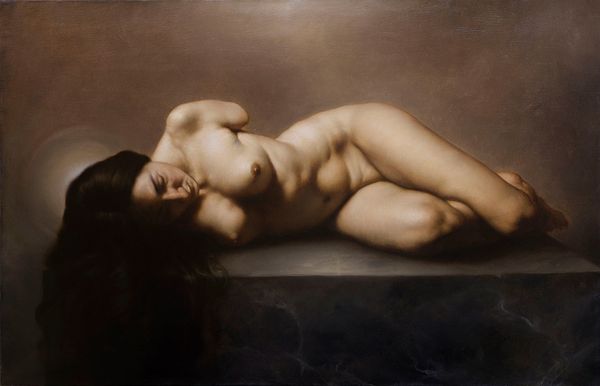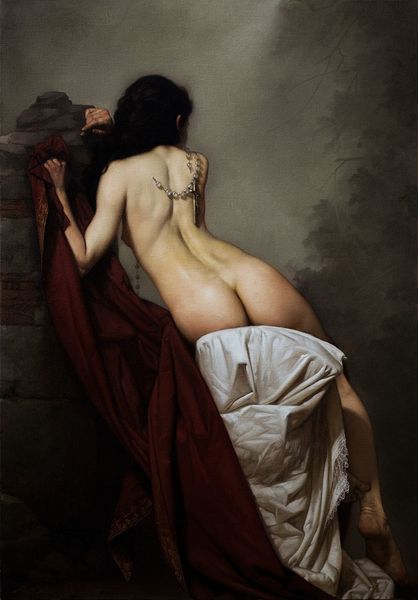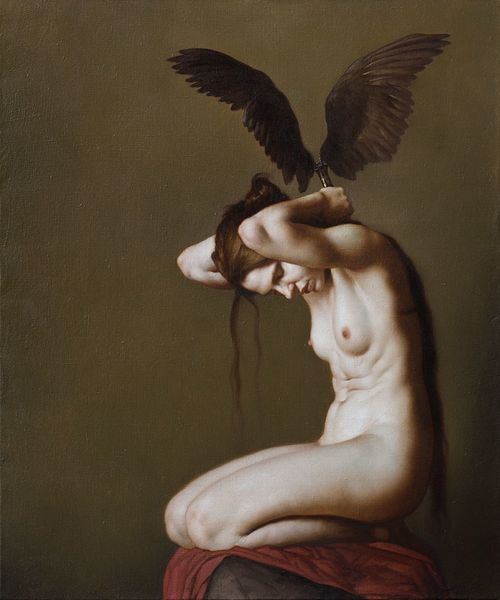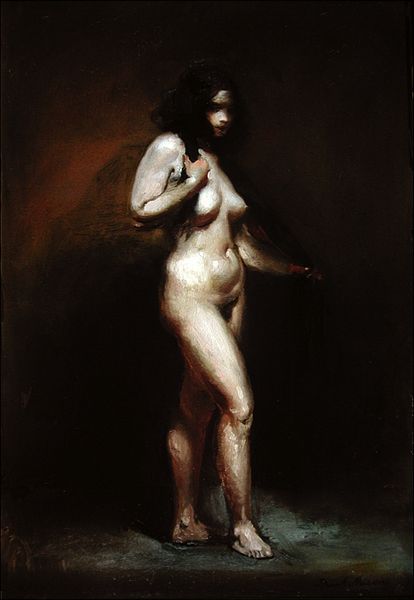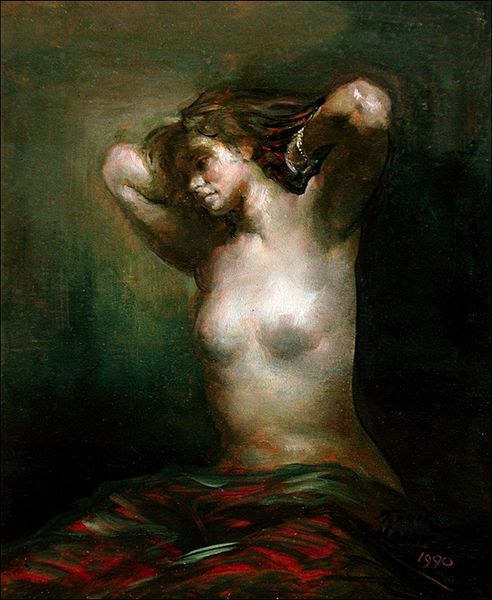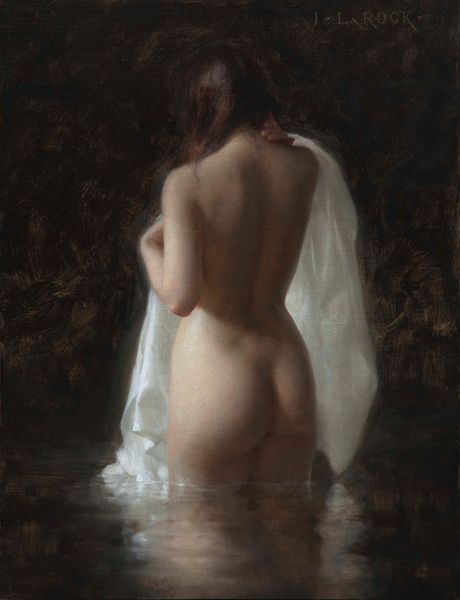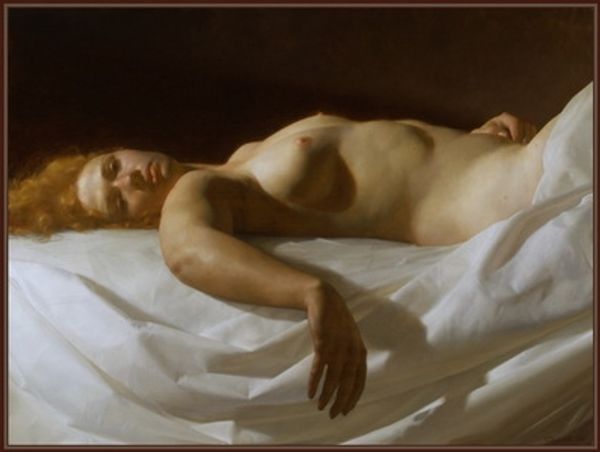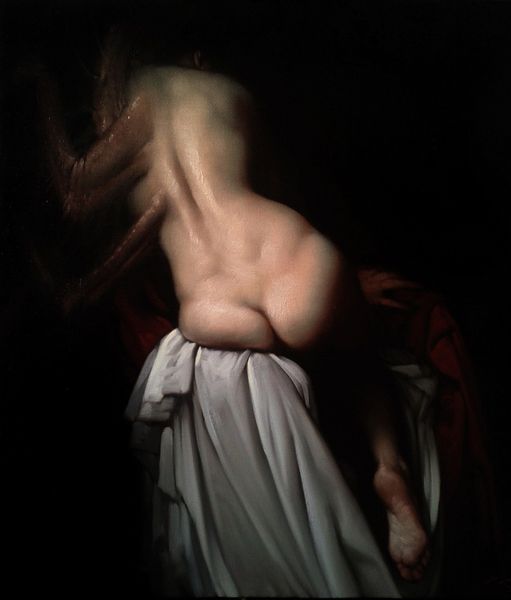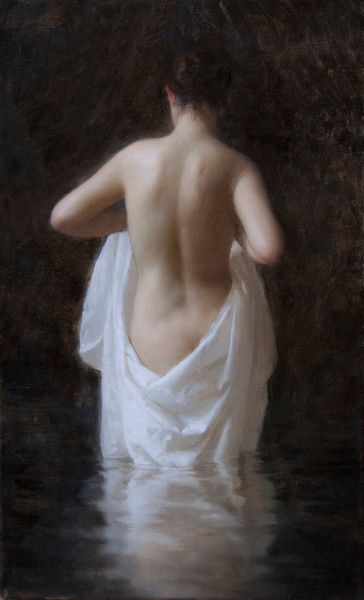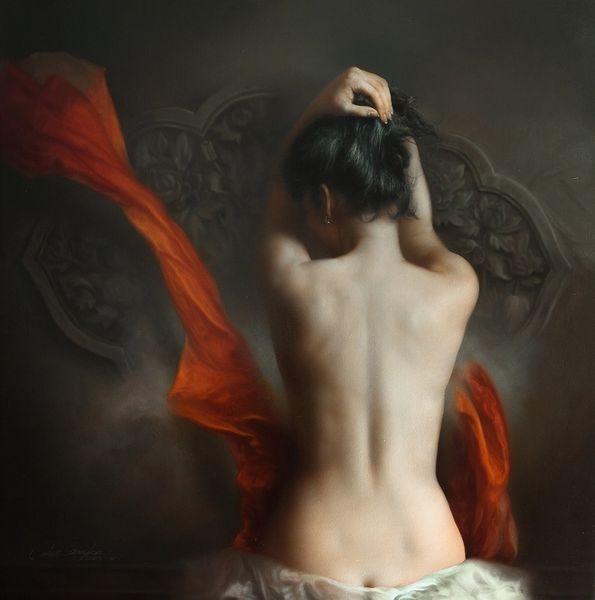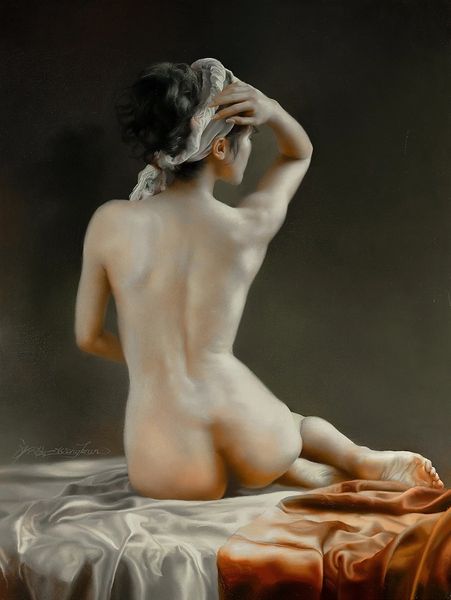
Copyright: Modern Artists: Artvee
Art Historian: Here, we observe Roberto Ferri’s “Ophelia,” painted in 2018. Ferri masterfully employs oil paints in a manner echoing the baroque style, characterized by realism and dramatic chiaroscuro. Artist: Woah, instantly striking. The figure almost emerges from the darkness like a dream… or maybe a haunting? The way light clings to the fabric and skin is incredibly tactile. It’s… arresting. Art Historian: Arresting, indeed. The title “Ophelia” immediately invokes the tragic Shakespearean figure. Ferri is deliberately drawing on centuries of artistic and literary symbolism associated with Ophelia's madness and demise, traditionally linked to the watery depths. Notice the subtle sensuality mingled with a certain vulnerability. Artist: Mmm-hmm, it’s that push-and-pull that I find so captivating! The water is a physical element but also… metaphorical? It both reveals and conceals the figure, kinda playing with ideas of purity and corruption all at once. What do you reckon about her covering? Art Historian: Exactly! It can evoke baptism, purification, rebirth even… or perhaps the shame associated with exposure and vulnerability, the darkness of a secret that is almost revealed, nearly seen. The gesture is not necessarily of concealment, maybe more of unveiling in dramatic revelation? Ferri employs classic art historical motifs to examine modern existential concerns. Artist: Maybe. And this baroque-ish style… it brings echoes of Caravaggio, right? All that tenebrism, that stark contrast of light and shadow—amplifying the drama. Yet it doesn't feel like a copy. Ferri updates it, infusing it with something distinctly modern, which might lead us away from the death/suicide motif, perhaps revealing her emergence or even rebirth? Art Historian: Absolutely. By utilizing this historical language of art, the nude female body almost becomes the stage of complex narratives; a reflection upon beauty, pain, and transformation throughout human history. Ferri shows a deep conversation through historical awareness of this archetype, rather than the usual superficial gaze we often find today. Artist: You are totally right. And what strikes me still, is its ambiguity, not answering clearly any question: darkness or light, birth or death… such complexity is why the piece truly haunts. Thanks for helping untangle it a little bit. Art Historian: It's a pleasure. Ferri's art provides a lens into the layers of our collective symbolic language, reminding us how historical, cultural, and deeply psychological frameworks impact our perception today.
Comments
No comments
Be the first to comment and join the conversation on the ultimate creative platform.
